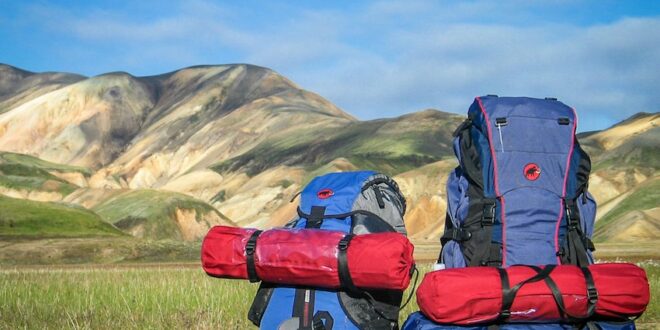You feel the weight of the world on your shoulders…literally. The night before starting your camping or hiking trip, you tossed all of your gear into your backpack. Now every step up the mountain is a struggle, as it gets steeper and steeper. You increasingly begin to dread the way you packed your backpack. You assumed if you had successfully got all your gear into the various compartments of the pack, then you would be prepared. But as you near the mountaintop, the poor weight distribution in your backpack meets gravity, causing you to lose your balance and you realise how important proper packing of backpacks, actually is.
Packing it up
On any camping trip, the backpack is one of the most vital tools you’ll need. It’s virtually a moving van without wheels. Whether your hiking trip is going to last a day or a week, there are definitely right and wrong ways to pack your gear. Don’t be alarmed, however, the process is much easier than it may seem at first. Just follow some basic guidelines:
Throwing your (backpack’s) weight around
Using the proper weight distribution is one of the keys to packing your backpack properly. This will allow you to maintain proper posture, and help your body to feel comfy whether you are scaling a mountain or crossing a stream. Here are some guidelines to follow:
1. At the top of your backpack, you should pack equipment you might need to use throughout the day. This could include your jacket, a drink bottle, or your favourite snack food. These items should be easily accessible.
2. Place the heaviest items towards the backpack’s centre, in close proximity to your back. Position clothing around the gear, to create some insulation. In addition, create horizontal balance with this hefty gear.
3. Underneath the heaviest gear, pack lighter gear, such as your tent and sleeping bag, which you will not require throughout the day.
4. If you are using a pack for hiking trips lasting multiple days, it may contain straps and hoops. These pieces are ideal for placing items such as tent poles. However, you should keep in mind balance is always the name of the game. If too much weight is added to the outside of the backpack, gravity could pull you backwards, causing back strain if you lean forward to perform a balancing act.
Small but significant
Aside from the main compartment of your hiking backpack, you should also consider the smaller pockets; like round neck lanyards, these storage tools may be small in size, but they are vital to your hiking experience. Side mesh pockets are some of the most useful types of pockets. When you need to hydrate, you want the process to be easy. These pockets literally put items such as water bottles, bags of chips and sunscreen bottles, within reach.
Besides mesh pockets, today’s backpacks contain a variety of other pocket types, to store a cornucopia of items. There are perfect pockets for wallets, mobile phones, pens, cards, etc., and are specially designed to prevent headphone cords from becoming a bird’s nest.
How important can packing your backpack before your next hiking trip, be? It can make your hike comfortable. It can make your hike efficient. In fact, it can even save your life!
By Steve Pak










- 12 years ago
Wow some great resources here, thanks for the information, I especially enjoy section hiker.